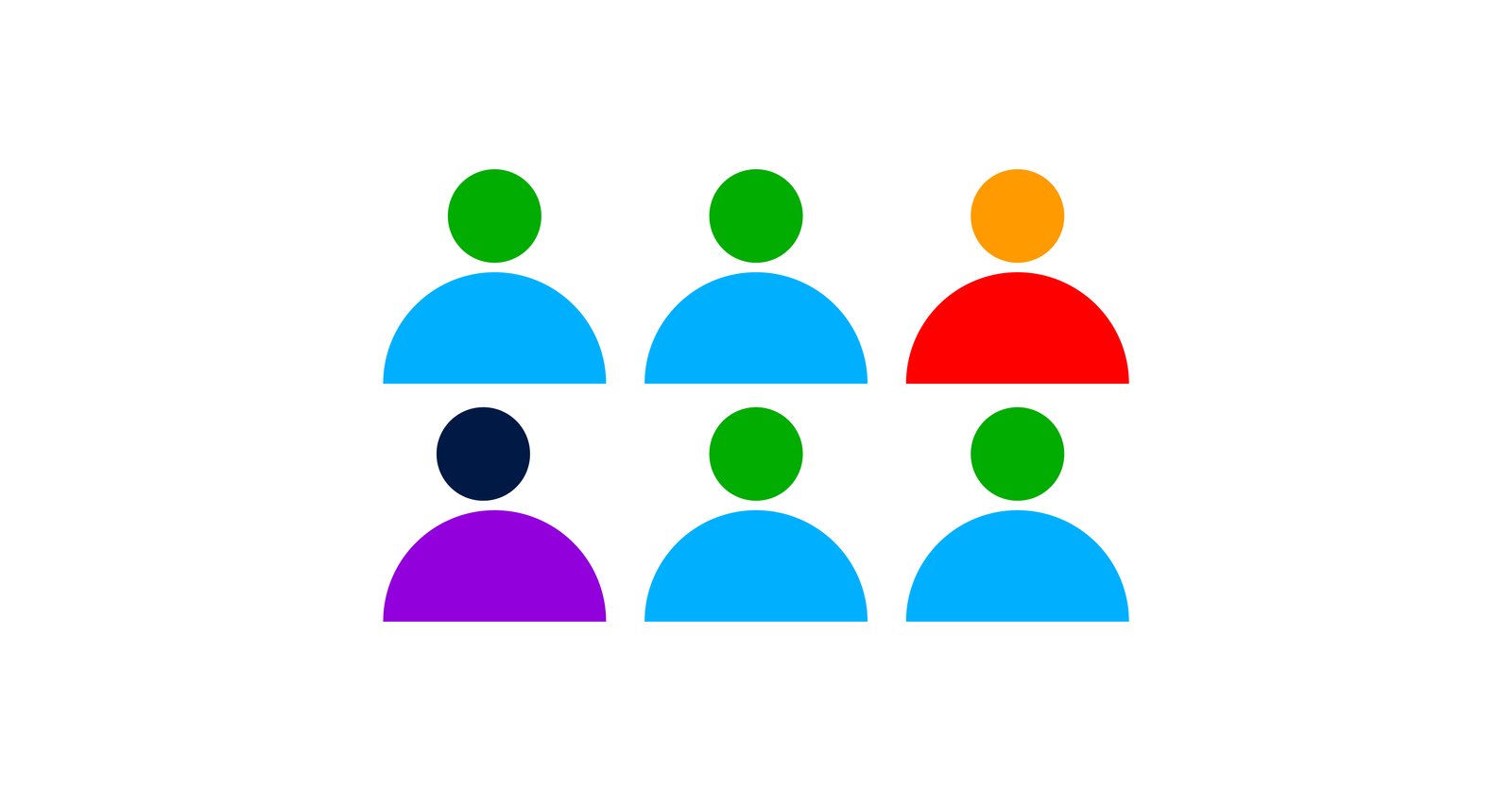According to Stackla, 86% of consumers say that authenticity is a key factor when deciding what brands they like and support.
In other words, it’s absolutely crucial to provide personalized content for your audience if you want them to buy your products or services (and stick around for the long haul).
In this post, we’ll cover what personalization is, why it matters, and show you how to use it to keep your customers around long term.
What is Personalization?
Personalization is a strategy marketers use to create tailored content based on visitor data (like visitors’ buying habits, needs, likes, and personal information, for example).
Since marketers cater to a variety of audiences, audience segmentation is imperative to delivering the right content to the right audiences. To segment audiences successfully, marketers typically consider several categories like location, interest, behavior, and referral.
Here is an example: Let's say you sell route planning software for other companies. You’ll need to adjust the content you create based on where they operate and what they experience on a regular basis.
For instance, Track-POD personalizes its B2B content strategy by creating route planning guides for customers. So, not only do customers use the software, but they also receive curated, detailed guides on how to use the software to improve efficiency and save money:
 (Source: Track-POD)
(Source: Track-POD)
They even take it a step further, providing insights on safety in relation to current news:
 (Source: Track-POD)
(Source: Track-POD)
By segmenting audiences by categories, marketers have a better chance at tailoring their content and converting their audiences into customers. Marketers can track these data points with visitor opt-in (i.e. surveys or forms) or without visitor opt-in (i.e. cookies, analytics, and IP addresses).
Why Personalization Matters
Personalization matters because it advances customer relationships, overall sales, and continuous long-term growth. Personalization means you know your customer well and you know what they need to solve a problem they have (and for that they’ll come back again and again).
As consumers’ expectations continue to accelerate, marketers must rise to meet those demands without sacrificing trust with their audiences.
This means allowing consumers to navigate their own paths to purchase organically.
Setting yourself up as an industry expert is one way of doing this. When consumers research topics or information related to your service or product, they’ll find your expertly crafted content to reel them in.
Look at how Visme, a cloud-based visual content creation company, achieves this:
In this example, Visme created an article about how to give a good presentation. Consumers on the hunt for presentation tips will now have the opportunity to find Visme’s top tips on presentations. While they’re there, they’ll realize that Visme has free presentation tools they can use immediately. After trying out the tools, they’ll be more inclined to unlock more features by signing up for a paid plan.
To date, Visme has almost 8 million users in over 130 countries, so they’re obviously doing something right.
Another example is using social media to connect with your audience like Photographer and Business Strategist Jasmine Star does:
Jasmine Star’s audience consists of aspiring entrepreneurs, photographers, and small to medium-sized businesses. Her social media personalization strategy includes consistently using business educational reels, videos, and inspirational posts to connect with her audience.
Her audience has the opportunity to utilize loads of free business resources and get inspired to join her business boot camp or her monthly social media subscription package (complete with stock photos and a posting plan). Business owners and aspiring entrepreneurs searching for business content on Instagram can easily see Jasmine dancing in their newsfeed to rap music as she gives her audience strategies and insights to grow their businesses.
Jasmine currently has more than 400,000 followers on Instagram and is a self-made millionaire all because of personalized content.
And that’s why personalization matters. It creates a full circle effect from thought to search to the customer over and over again, making it a proven strategy to help increase customer lifetime value.
Now that we have a grasp on the power of personalization, let’s take a look at some more examples of successful content personalization.
Try personalizing your content with Foleon
Successful Content Personalization: 6 Examples
Content personalization goes beyond a simple website, a couple of landing pages, and navigation bars — those are important, but they’re the bare minimum, don’t stop there.
Here are some additional ways to use content personalization to increase marketing success:
1. Comparisons and Filters
Adding comparisons and filters on your website and landing pages is another incredible way to put the buying power into consumers’ hands (allowing them to once again steer their own journey to purchase).
A common example is skincare brands who use special filters and online quizzes to help their audiences choose the best products tailored just for them:
And school finder companies like Best Value Schools:
Students searching for their next school can come across a comparison site like this one, choose the appropriate filters, and have the chance to compare multiple schools in numerous categories.
And here’s one more example. This comparison of the best PEO providers allows readers to customize the content by entering the information specific to their needs — which then filters out the irrelevant content, saving them time on sifting through all the providers:
Comparison websites and filters are great examples of content personalization: instead of focusing on one category, they give users access to multiple choices that will most likely suit their needs.
2. Customized Blog Posts
Blogging is still a lucrative content marketing strategy and customized blog posts are the way to go.
As we mentioned earlier, presenting yourself as an industry expert is important.
Creating customized blog posts like this one related to your industry will help customers hesitating to use your service to go for it:
In this example, the first line of the post directly targets potential homebuyers in Austin with the first line reading “Thinking of buying a home in Austin soon?” Opening a blog post like this is a great way to speak directly to your audience and personalize your content for them.
Other custom blog posts include lifestyle posts, behind the scenes, case studies, original stories, success stories, infographics, and reports (to name a few).
3. Recommending Related Topics
One of the simplest ways to personalize content, which also doesn’t require any data collection from the user and can be fully automated, is to add some recommendations of similar or related content into each blog post:
In this example, when readers finish reading this blog post from WaveApps, they have access to related topics that were internally linked into the post like the ‘Read here’ link above.
It’s also important to provide recommendations to readers based on what they’ve already read before. For example, at the end of this complete guide to value chains, related posts are provided at the end that would probably interest someone who has already read this article:
Recommending related content via embedded links within a post and recommending related reading at the end of a post are both winning strategies for content personalization and internal linking.
4. Email Content
Many marketers use email content personalization because it’s one of the easiest ways to build trust with audiences and meet them in a personal way: in their inbox.
Take a look at this email newsletter by Unsplash, a stock photo website:
In this example, viewers receive a reminder about new photo uploads, as well as Unsplash’s top picks of the day. Viewers who see this newsletter now have a visual reminder that Unsplash can provide them with stock photos for whatever they need (and they may even pop over and start downloading them).
Another example is personalizing email outreach — this is especially important for fundraising or investors. The content of your emails should be unique and address the pain points of your target audience individually — but that doesn’t mean you have to write them from scratch each time. Having high-quality templates that you can customize will save you loads of time and save you from forgetting to include all of the important details:
5. Trials and Demos
Since there are many unique learning styles, providing different types of trials and demos is essential to personalization (especially for software platforms and new products).
Take a look at how Nlyte offers different ways for potential customers to learn about their Data Center Infrastructure Management software. They offer a video, demo, white paper, and a free trial option on their website:
Still not keeping customers after a trial? Consider extending the trial period, offering a temporary monthly discount, or waving any initial fees (like enrollment fees, annual fees, and shipping).
Another option is creating more behind-the-scenes content featuring new product reveals, how products are made, and real customers happily using your products and services — this is a great time to use photos and videos to humanize your brand. As for where to display your behind-the-scenes content? Break it up amongst your marketing channels.
Here’s how:
First, create your behind-the-scenes plan (i.e. who, what, when, where, why, etc.).
Then, schedule a time to create the content with anyone who needs to be involved like the videographer, customer, business partner, etc.
Next, shoot the content making sure to demonstrate any details you want your audience to know like “this jacket has a detachable hood and is reversible” or “Cindy got to quit her job all because of our fashion affiliate marketing program, can you tell us more Cindy?”
Once the content is shot, edit the content accordingly (make sure to save some real behind-the-scenes clips like a sneak peek at your lighting set-up or cracking jokes with the team backstage.)
Then, post your content on your blog — the first marketing channel. Next, break up that content into separate chunks for your email newsletter and social media.
For example, share a clip of you joking with your team on your Instagram story, and make a reel showing your lighting set-up and post it on your Instagram page. Then, share some photos of you with your team in your email newsletter. Now, you have one main behind-the-scenes content piece on your blog, as well as various behind-the-scenes clips on your email newsletter and Instagram. Repeat this process for all of your marketing channels if appropriate.
6. E-commerce
Buying products from a website or a dedicated app is considered e-commerce (while buying products directly from social media is considered social commerce).
Creating a personalized shopping experience is essential to setting up your online store for success. An example of how to do this is customizing personalization depending on the season or holiday.
A Gift Personalized does that each time there is a special day or holiday, like here with Valentine’s Day:
In this example, shoppers looking for Valentine’s gifts (or shoppers who forgot about Valentine’s Day altogether) are invited into a pink and red experience of Valentine’s Day gifts for partners, friends, and family. AGiftpersonalized uses a large eye-catching banner at the very top of their homepage to immediately pull viewers in.
Creating content based on seasons and holidays is an easy way to add personalization to any online store.
Conclusion
Personalization is one of the most important keys to successful content marketing.
Whatever personalization strategy you use, make sure you understand who your audiences are, segment your audiences by category, and tailor your content accordingly — that is, if you want to keep customers around for the long haul.
Psst... If you're curious to see how personalization can improve your content performance, then you should test Foleon.

 (
( (
( (
( (
( (
( (
( (
( (
( (
( (
( (
( (
(